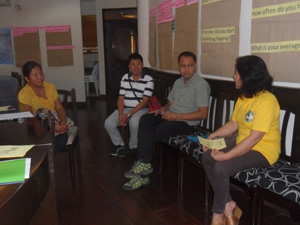 A study conducted by the College of Forestry and Natural Resources and Institute of Renewable and Natural Resources of the University of the Philippines Los Baños (CFNR-UPLB and IRNR-UPLB) found Compostela Valley and Basilan as high potential areas for planting rubber and cacao, respectively.
A study conducted by the College of Forestry and Natural Resources and Institute of Renewable and Natural Resources of the University of the Philippines Los Baños (CFNR-UPLB and IRNR-UPLB) found Compostela Valley and Basilan as high potential areas for planting rubber and cacao, respectively.
Compostela Valley recorded 29.8% of the area that has high potential for planting rubber, followed by North Cotabato, with 20.8%. Zamboanga Sibugay, which currently has 66,484 hectares of plantation, has the largest area planted with rubber. This is followed by North Cotabato, with 59,387 hectares of land planted with rubber.
Meanwhile, Basilan recorded 10.7% of the area that has high potential for planting cacao, followed by Davao Oriental, with 10.1%. At present, Davao Oriental records 6,920 hectares of cacao plantation, which is the highest total area planted with cacao. Compostela Valley follows, with 5,879 hectares of land planted with cacao.
The study, “Geographic Information System (GIS)-based inventory and sustainability for rubber and cacao in major production areas of the Philippines,” is funded by the Philippine Council for Agriculture, Aquatic and Natural Resources Research and Development of the Department of Science and Technology (DOST-PCAARRD).
Headed by Dr. Nathaniel C. Bantayan, professor at the Institute of Renewable and Natural Resources (IRNR) and Director of the Makiling Center for Mountain Ecosystems of UPLB, the project aimed to develop a national database on the locations of plantations and production and also identify possible expansion areas.
Among the sites studied under the project included Agusan del Sur, Basilan, Bukidnon, North Cotabato, Compostela Valley, Davao del Sur, Davao Oriental, Palawan, and Zamboanga Sibugay.
The possible expansion areas were identified through important parameters for habitat suitability and niche modeling. Specifically, the potential areas were identified by assessing the area’s rainfall, temperature, slope, elevation, land cover, and quality of soil.
The project also equipped members of the local and national government agencies with knowledge and know-how in sustaining plantations of rubber and cacao.
